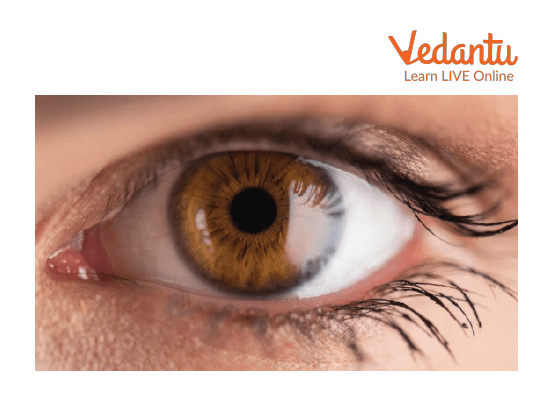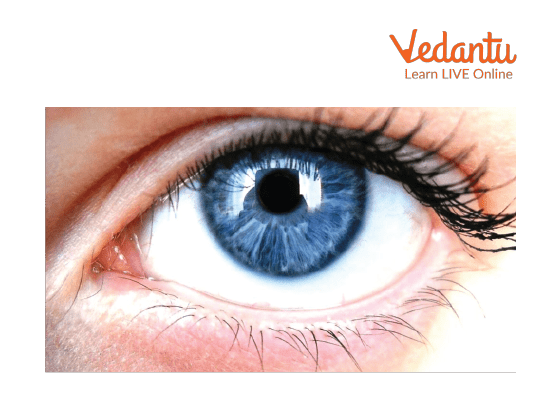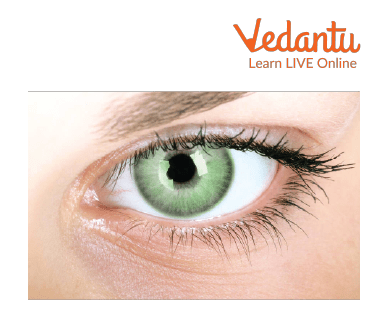




Dominant Eye Colour Genes
Are brown eyes dominant or recessive? Eye colour can be either blue or brown. We should know that "Brown is always the dominant eye color and blue eyes are recessive". After the logic of yellow and green peas and making a Punnett square, it should be impracticable for two blue-eyed parents to have a brown-eyed child but it would be possible for brown-eyed parents to have a blue-eyed child if both parents were a genetic mixture of one brown-eye and one blue-eye gene.
In the single-gene paradigm, two blue-eyed parents have only blue-eye genes and can, therefore, produce only blue-eyed children. However, eyes are not just blue or brown; some people in the Asian population have eyes so dark that they look almost black. There are blue-eyed Scandinavians, and groups with grey, green, violet, hazel, and a myriad of colours.

Brown Eyes

Blue Eyes
Why is the Colour of the Eyes Different?
The colour of the iris is determined by the amount of melanin pigmentation. The more pigment, the darker the iris. Blue, grey, and green eyes are lighter because there is less melanin inside the iris. By far, the most common eye colour in the world is brown, with over 55% of the population falling into this category.
Depending on a person's birth, the demographic of eye colour can vary. For example, almost all individuals of African and Asian ancestry have brown eyes. A defining characteristic of brown eyes is their multi-coloured appearance which can vary from copper to green depending on the light. Hazel eyes have a high concentration of melanin around the border of the iris. Estimates suggest that 5 to 8 per cent of the world's population is both green and brown. Only 2% of the world's population has green eyes.
Why are Brown Eyes Dominant?
George Mendel long ago in the 19th century made a lot of research on pea plants and long ago he gave a few rules and even modern-day genetics is obliged to follow those rules. It was always known that parents pass their characters to their children or offspring. But how and in what form nobody knew. There Mendel came to solve the mystery. He did a lot of research and then said that parents pass character to offspring in the form of something called factors and factors are always in pairs. He also said that one of the factors is dominant and one of them is recessive. He bred pea plants and said that if only a homozygous pair of factors can make a trait appear then it's a recessive factor and if both homozygous and heterozygous pair of factors can make a trait appear it's a dominant character.
For example, if the factor for tallness is T and the factor for a dwarf is t then T is dominant and t is recessive. As only a homozygous pair (tt) can make a plant grow short. But both homozygous (TT) and heterozygous (Tt) pairs can make a plant grow tall. This concept of dominance and recessiveness applies everywhere.
A few years later a microscope was discovered and the structure of cells was being studied. The scientists said that DNA quite clearly fits the definition of factors given by Mendel. Keep note that at the time of Mendel's experiments, the microscope was not discovered, so he couldn't tell if a factor exactly was. He just knew there was something in the cell responsible for this passing of information.
Later, scientists knew that it was a gene that was a unit of heredity. This means it is a gene that is passed from one generation to another and that carries information about what the progeny is gonna exhibit. Now for this, we can take the example of human eye colour. You must have seen a lot more individuals with brown eyes than blue. This is because the brown eye colour is dominant. Trust or not this is also a phenomenon quite explained by genetics.
How do Children Inherit Eye Colour?
If the parents have blue eyes, then there is a possibility of the child also having blue eyes. It follows that iris colour is controlled by genetics. Until a long time ago, even doctors thought that eye colour was determined by a gene. Due to this, brown eyes tend to dominate over blue eyes. However, many different possibilities exist because parents have two pairs of genes on each chromosome. Eye colour can be said to be a polygenic trait, which means it can be determined by multiple genes.
Solved Questions
1. Which eye colour is recessive over brown eyes?
Ans: Blue eyes genes are recessive over brown eye genes.
2. What does eye colour depend on?
Ans: Eye colour depends on the iris.
3. Which is the rarest eye colour?
Ans: Green-coloured eyes are the rarest.

Green Eyes
Learning by Doing
Write True or False.
Pink colour eyes are the rarest eye colour.
Brown eyes are recessive.
The eyes are only brown or blue.
The colour of the iris is determined by the amount of melanin pigmentation.
Summary
The human eye colour could be blue or brown according to the presence of the right combination of alleles in a person. If B is the allele for brown eye colour and b is for blue eye colour. So, BB combinations produce brown eye colour and bb combinations will produce blue eye colour. As you must've noticed, only homozygous conditions (same pair of alleles) can give blue eye colour; this gives proof that blue eye colour is recessive in humans. Also heterozygous (different pairs of alleles) and homozygous both conditions produce brown eye colour. This signifies that brown eye colour is dominant.
FAQs on Brown Eyes are Dominant to Blue Eyes
1. How does eye colour change many times in life?
The iris, the colour of the eye, is essentially a muscle. Its role is to control the size of the pupil so that we can see better under different light system conditions. When there is less light, the pupils enlarge and conversely, get smaller in bright light. The pupil also constricts when you focus on things nearby, such as a book you are reading. When the size of the pupil changes, the colourway also shrinks or becomes different, causing the eye cocalero to change slightly.
2. Is it possible that blue eyes can be dominant too?
No. Because only homozygous conditions (same pair of alleles) can give blue eye colour this means that blue eye colour is not dominant.
3. What is Melanin in the eyes?
Melanin gives colour to the eyes and also protects them from UV rays. Moreover, it is determined by genes.









